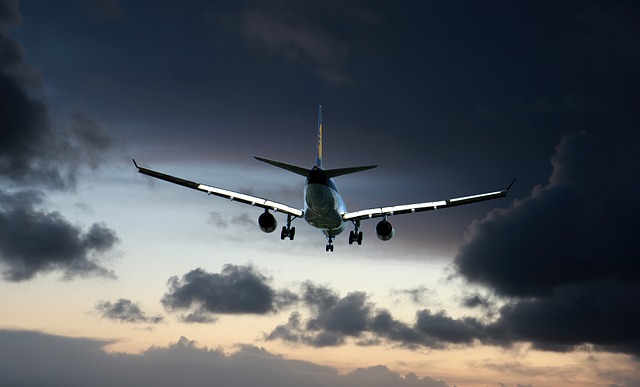Karachi, Pakistan's economic powerhouse and global transportation hub, faces unique challenges in air travel due to its intense airport traffic. Fuel price variability directly impacts operational costs for airlines, leading to dynamic changes in airfares. When fuel costs rise, so do ticket prices, affecting both domestic and international travelers. Conversely, declining fuel prices can lead to more competitive rates. This delicate balance significantly influences the local economy, with potential flight frequency adjustments during high fuel cost periods. Understanding these dynamics is crucial for both airlines aiming for competitiveness and consumers seeking the best airfare deals in Karachi's bustling travel market. Advanced analytics and predictive models tailored to Karachi's unique market conditions can help manage price volatility and enhance passenger experiences.
In the dynamic aviation landscape of Karachi, understanding airfare trends is crucial amidst fluctuating fuel prices. This analysis delves into the intricate relationship between fuel costs and ticket prices in Pakistan’s largest city. We explore how historical data reveals patterns in airfare and fuel expenses, while examining market forces shaping Karachi’s aviation industry. By dissecting consumer behavior and pricing strategies, this study offers insights into future prospects, predicting potential airfare trends for one of the world’s busiest urban centers.
- Understanding Karachi's Air Travel Dynamics
- The Impact of Fuel Price Fluctuations
- Historical Analysis: Trends in Airfare and Fuel Costs
- Market Forces Shaping Karachi's Aviation Industry
- Consumer Behavior and Pricing Strategies
- Future Prospects: Predicting Airfare Trends
Understanding Karachi's Air Travel Dynamics

Karachi, Pakistan’s economic hub and a bustling metropolis, experiences unique air travel dynamics due to its status as a major regional transportation node. The city’s airport, Jinnah International Airport (IA), serves as a gateway to South Asia, handling flights from across the globe. This intense traffic, coupled with Karachi’s ever-changing economic landscape, makes understanding fuel price variability’s impact on airfare crucial.
Fluctuations in global fuel markets directly influence operational costs for airlines operating in and out of Karachi. As one of the world’s largest importers of aviation fuel, Pakistan is susceptible to international market dynamics. When fuel prices rise, airlines often adjust their pricing strategies, which can lead to increased airfares for passengers. Conversely, during periods of stability or declining fuel costs, carriers may offer more competitive rates. This relationship highlights the intricate balance between fuel expenses and ticket prices in shaping Karachi’s air travel economy.
The Impact of Fuel Price Fluctuations

In the dynamic landscape of global travel, fuel price fluctuations play a pivotal role in shaping airfare dynamics, particularly in metropolitan centers like Karachi. When fuel costs rise, airlines often reflect these increased expenses by adjusting ticket prices upward, impacting both domestic and international travelers. Conversely, declining fuel prices can lead to more competitive airfares, providing relief for those seeking affordable travel options.
In Karachi, the impact is further influenced by the city’s status as a bustling commercial hub. Fluctuations in fuel prices can significantly affect the local economy, with ripple effects on businesses and individuals alike. For example, during periods of high fuel costs, airlines may reduce flight frequencies or even discontinue certain routes, limiting travel choices for residents and visitors alike. Conversely, more stable or lower fuel prices can encourage increased air travel, fostering economic growth and facilitating the exchange of cultures and ideas in this vibrant metropolis.
Historical Analysis: Trends in Airfare and Fuel Costs

In Karachi, as in many other cities worldwide, airfare has been closely tied to fuel price fluctuations. Historical data reveals a notable trend where spikes in fuel costs often translate into higher airline ticket prices. Over the past decade, global aviation has witnessed a seesawing pattern with fuel prices reaching unprecedented heights in 2014, prompting carriers to adjust their fare structures accordingly. This period highlighted the immediate impact of market volatility on consumer travel budgets.
A deeper dive into the Karachi market shows that while airfare has generally increased over time, there have been periods of relative stability. For instance, the post-2016 era witnessed a more balanced fuel price environment, allowing for modest fare growth. This historical analysis underscores the dynamic relationship between fuel costs and airline ticketing, especially in metropolitan centers like Karachi where travel demand is high.
Market Forces Shaping Karachi's Aviation Industry

The aviation industry in Karachi, Pakistan, is a dynamic sector influenced by various market forces. One of the key factors shaping its landscape is the volatile nature of fuel prices. Karachi’s position as a major economic hub attracts both domestic and international carriers, making it a competitive market. The demand for air travel from this bustling metropolis is high, driven by a growing population and a diverse business environment. This demand often translates into higher ticket prices, especially during peak seasons when oil prices are on the rise.
Market dynamics in Karachi also involve intense competition among airlines. With numerous carriers vying for customers, fluctuations in fuel costs can significantly impact pricing strategies. Airlines may adjust fares to cover expenses, but they must balance this with the risk of losing customers to competitors offering more affordable rates. In such scenarios, efficient management of fuel costs becomes crucial for Karachi’s aviation industry to remain competitive and sustainable.
Consumer Behavior and Pricing Strategies

In Karachi, as in many metropolises around the world, consumer behavior towards airfare is significantly influenced by fuel price variability. When fuel costs rise, airlines often adjust their pricing strategies to account for this expense. This typically results in higher ticket prices, prompting consumers to alter their travel plans or search for more affordable alternatives. For instance, budget-conscious travelers might opt for lesser known airlines or consider traveling during off-peak seasons when airfares tend to be lower.
However, fuel price fluctuations can also drive innovation in pricing models. Some carriers implement dynamic pricing, where tickets are priced based on real-time demand and available capacity. In Karachi’s competitive market, this strategy can lead to more flexible pricing, offering discounts during periods of low demand. Understanding these dynamics is crucial for consumers aiming to secure the best deals while planning their journeys within or out of the city.
Future Prospects: Predicting Airfare Trends

In the dynamic landscape of global travel, predicting airfare trends is a complex yet critical task, especially with Karachi’s aviation sector playing a pivotal role in South Asia. Advanced analytics and machine learning algorithms offer promising prospects for forecasting airfare variations. By analyzing historical pricing data, seasonal trends, and external factors like fuel prices, these models can predict future ticket costs with remarkable accuracy. This capability is invaluable for both airlines and travelers; carriers can strategize pricing and capacity planning while consumers benefit from informed decisions about the best times to book.
Karachi’s unique position as a major regional hub presents specific challenges and opportunities in this context. The city’s airport serves as a gateway to diverse destinations, making it susceptible to international fuel price fluctuations. However, its status also allows for a rich dataset of domestic and international travel patterns. By leveraging these data points and employing sophisticated predictive techniques, researchers can model airfare trends tailored to Karachi’s aviation market. Such insights could enable more effective management of price volatility, fostering stability in the travel industry and enhancing passenger experiences.
In conclusion, the intricate relationship between airfare and fuel price variability in Karachi presents a dynamic market landscape. By examining historical trends, understanding consumer behavior, and considering the influence of market forces, we can predict future airfare movements. This analysis highlights the adaptability of Karachi’s aviation industry, offering valuable insights for both industry stakeholders and travelers navigating this vibrant city’s skies.

Leave a Reply